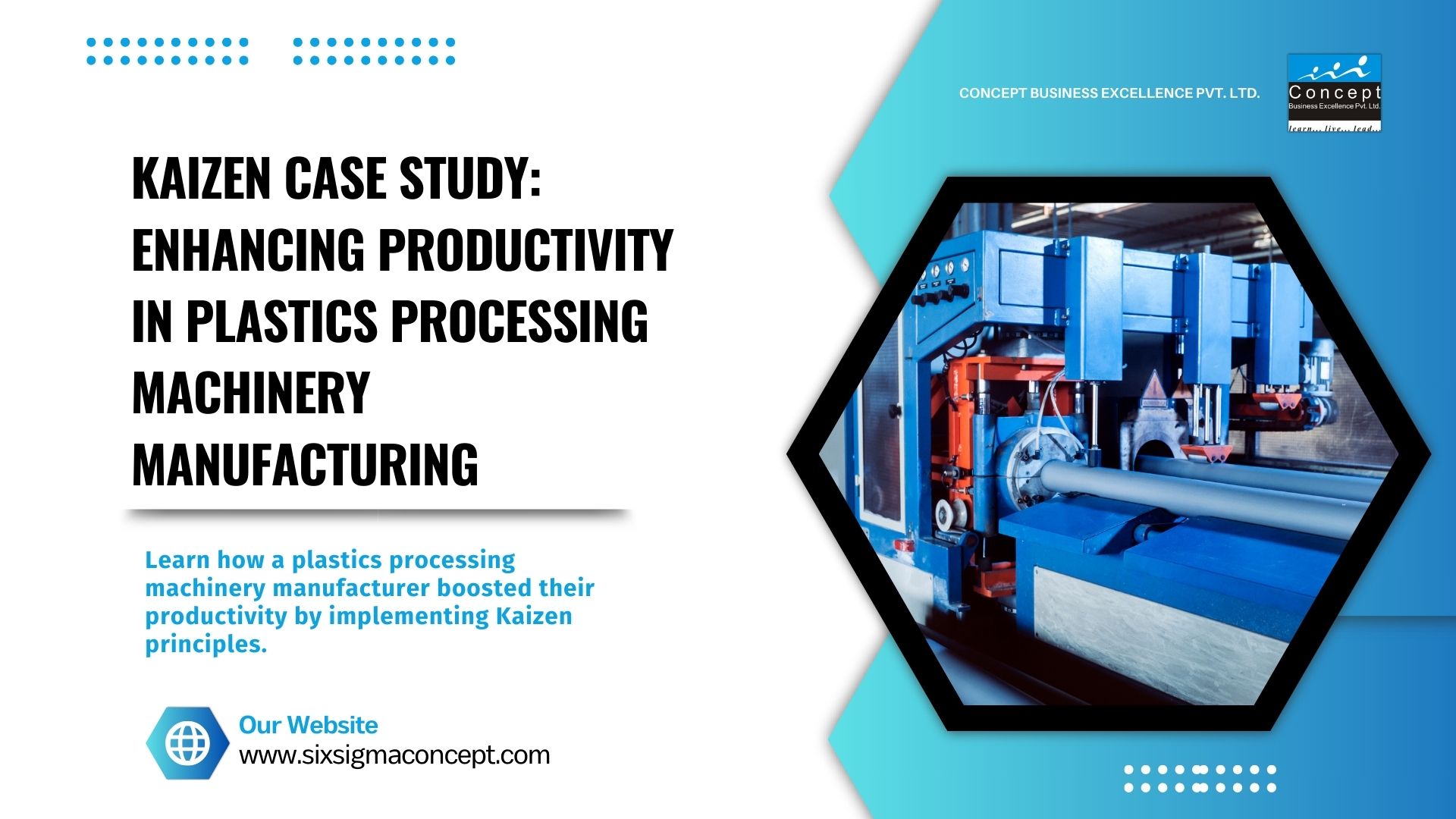Plastics processing machinery manufacturing:A Kaizen Case Study in Productivity Enhancement
Introduction:
Our client, a machine manufacturer, faced declining productivity due to rework, excessive worker movement, and space constraints. This resulted in wasted time and inefficiency and led to high throughput lead time. To address these challenges, the company adopted Kaizen, a continuous improvement philosophy. This case study explores how Kaizen techniques were implemented to streamline production, minimize rework, and optimize space utilization.
1. Planning:
- Team formation: A cross-functional team comprising production personnel, engineers, and quality control specialists was created.
- Awareness Sessions: Kaizen Awareness Trainings have been scheduled for all employees.
- Problem identification: Through data analysis and employee feedback, the team identified the root causes of productivity loss – rework, man movement, and space constraints.
- Setting goals: The team set specific, measurable, achievable, relevant, and time-bound (SMART) goals for reducing rework rate, minimizing man movement, and optimizing space utilization.
2. Execution:
- Gemba: Gemba walk has been done to observe processes firsthand to spot inefficiencies and find improvement opportunities.
- Theme: Implementing Kaizen initiatives based on PQCDSM drives continuous improvement on the shop floor by focusing on productivity, quality, cost, delivery, safety, and morale.
- Data collection: Data on rework rates, cycle times, and worker movement was collected before and after the Kaizen implementation.
- Performance analysis: The team compared data to identify improvements and areas for further optimization.
3. Kaizen Showcase:
- Kaizen Mela (Fair): Kaizen Mela is organized for showcasing Kaizen achievements. The different teams have showcased their improvements.
- Reward & Recognition: The best performing teams are rewarded to motivate
4. Standardize:
- Standardization: Successful improvements were documented and incorporated into standard operating procedures for continuous application.
- Continuous Improvement: The Kaizen team continued to identify new opportunities for improvement, fostering a culture of continuous learning and adaptation.
- “Kaizen Mela” to be celebrated every 6 months as a reward for ongoing improvement efforts.
Results:
- Streamlined processes and better-quality checks slashed rework.
- Workspace revamp reduced unnecessary movement, boosting efficiency.
- Kaizen boosted productivity, raising output, and cutting costs.
- 90% Employee engagement

